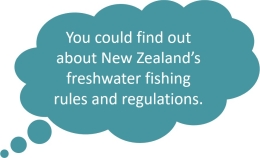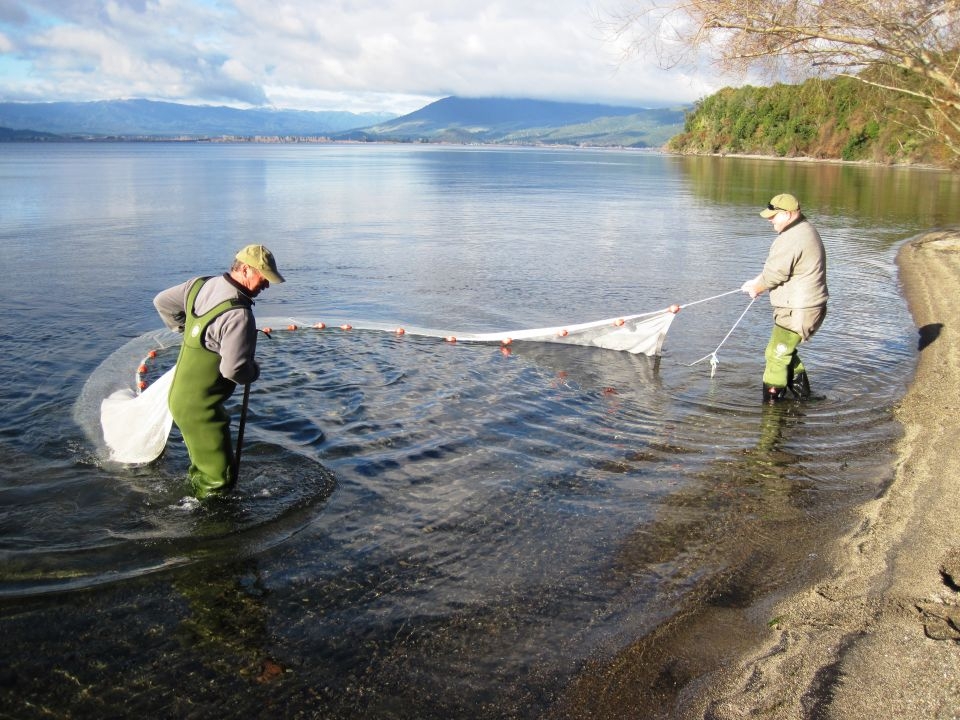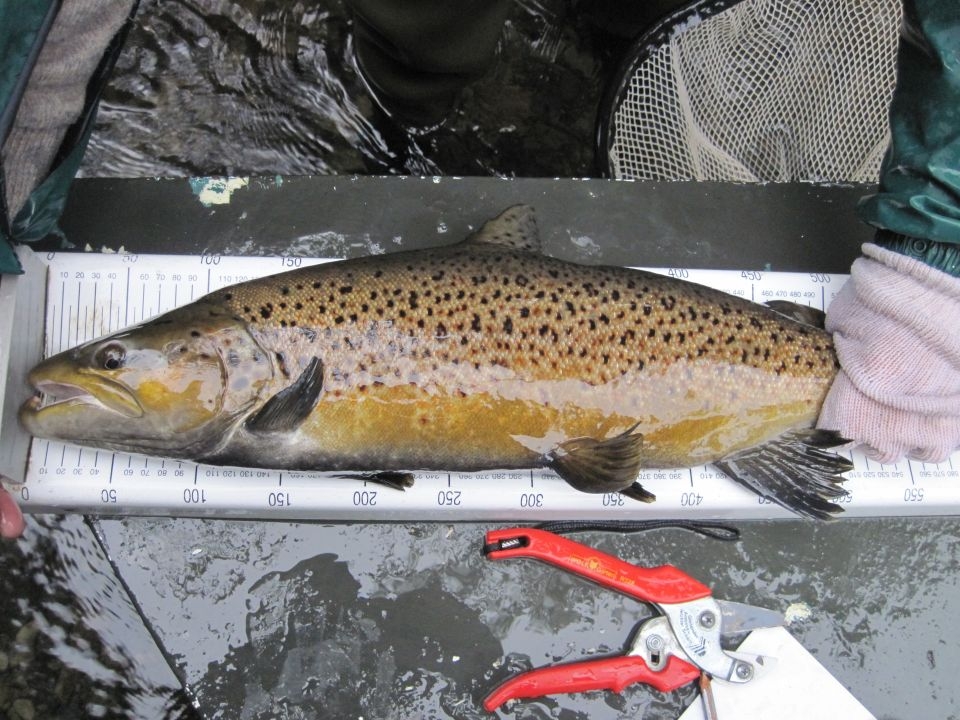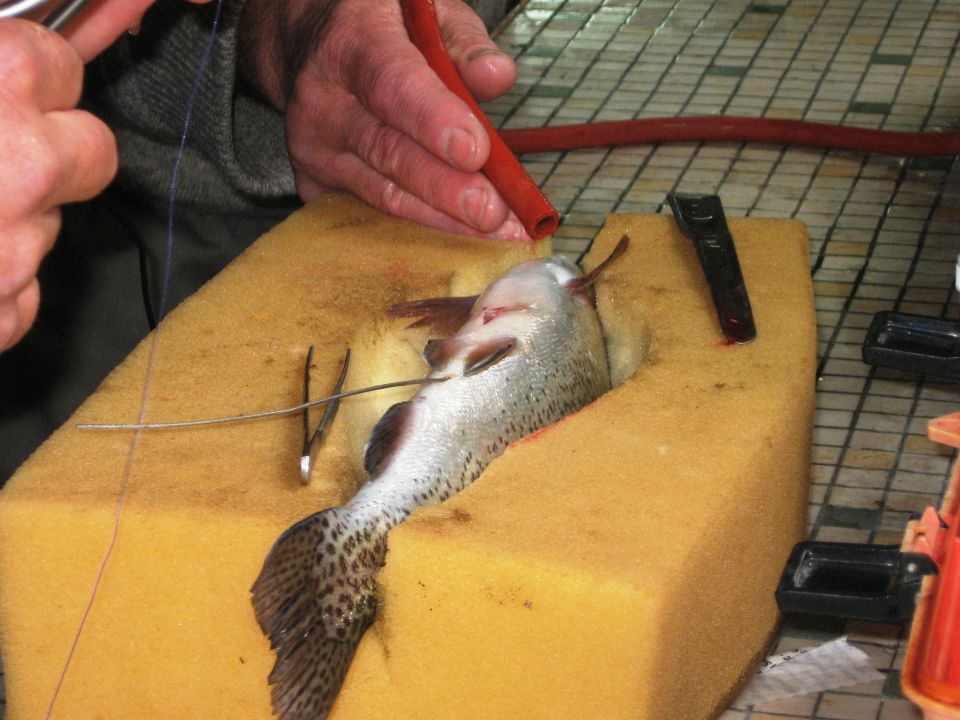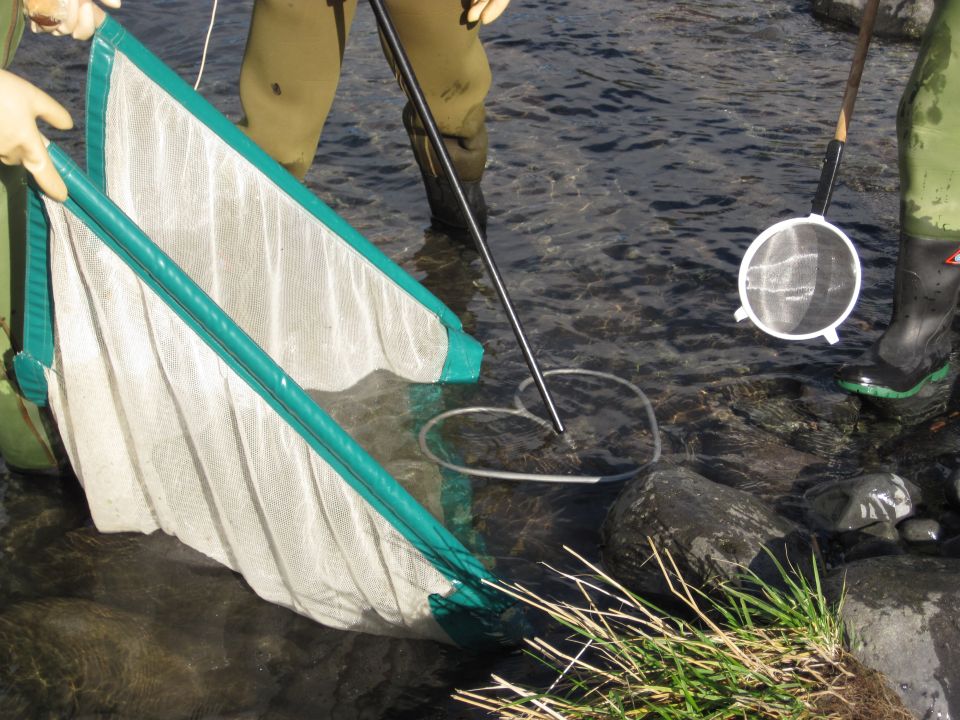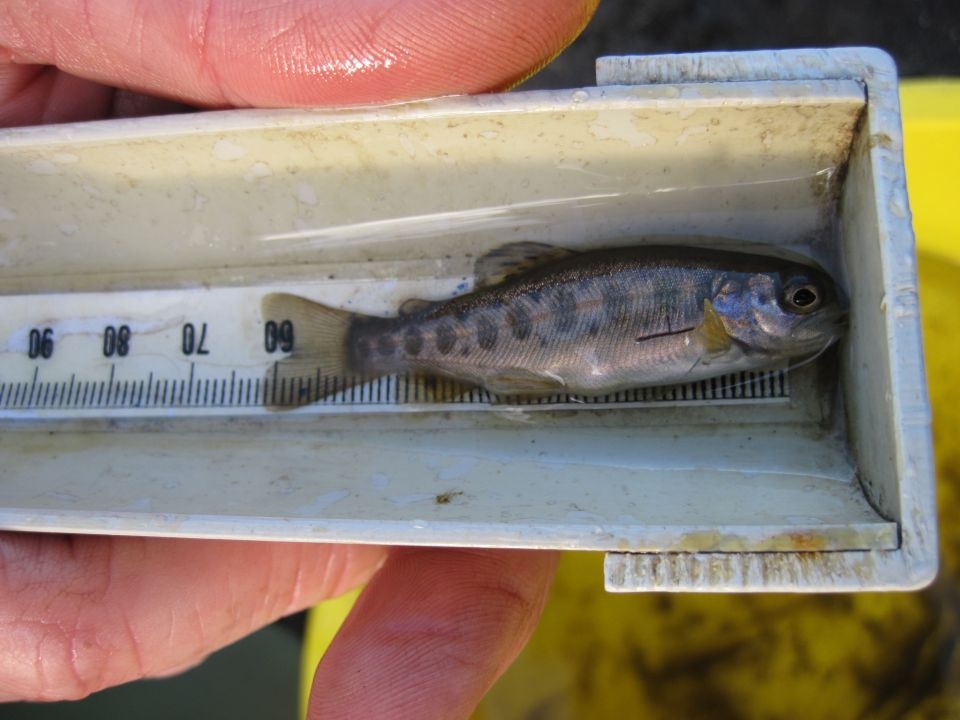Why manage a wild fishery?
Information collected by the rangers helps the fishery manager answer questions like:
- What do trout do in Lake Taupō during the course of a day, a season, or a year?
- How do trout respond to changes in their environment like water temperature or current change?
When fishery managers learn about trout behaviour and their habitat, they can make better decisions to help ensure the trout population remains stable.
How the fishery is managed
Three methods for gathering information about the trout in the fishery are described below.
- Fish traps are placed in certain streams and rivers in order to catch the adult trout travelling through these areas. The weight and length of each fish is recorded by a fishery ranger. The fishery ranger will also clip a specific fin which is one way to tag the trout.
- Data logging is another way to find out information about the trout living in Lake Taupō. This involves inserting a high-tech transmitting tag inside a trout's body and then setting the fish free. The tags transmit a signal to the data logger listening stations every minute. These signals contain information about the location of the trout, including the depth and temperature of the water they are swimming in.
- Electronic fishing is a method used to monitor the juvenile trout population. This method uses a machine that produces electrical currents. The machine is worn on the fishery ranger's back and the electrical current passes into a pole that goes into the water. Any fish that are swimming nearby are stunned by the electrical current in the water and cannot swim away. The water pushes the stunned fish into a net so they can be identified for fish type and measured. After a short time the fish wake up and are returned to the water unharmed.
All the information that is gathered by these methods is collected and interpreted by the Taupō Fishery scientists. This information is important for helping the fishery manager make decisions about what types of fishing methods can be used in Taupō and how many fish per day each angler is allowed to keep.
Scientists can also use their results to help monitor the quality of the water.
